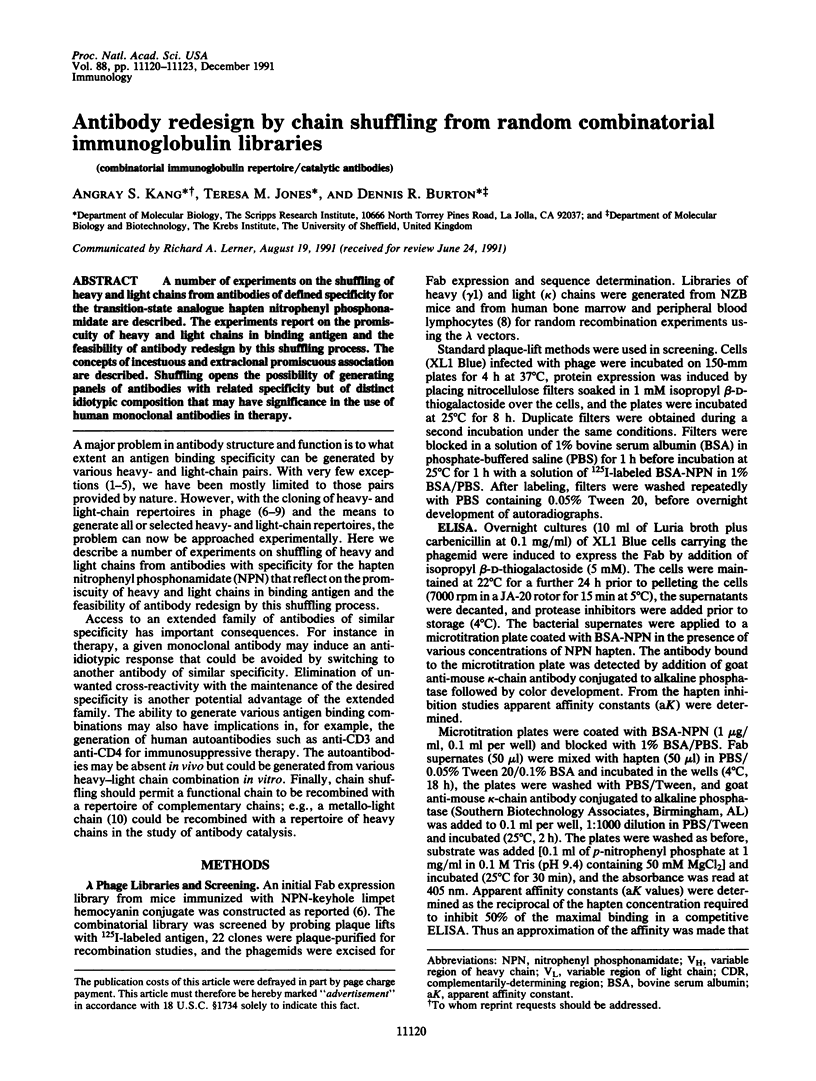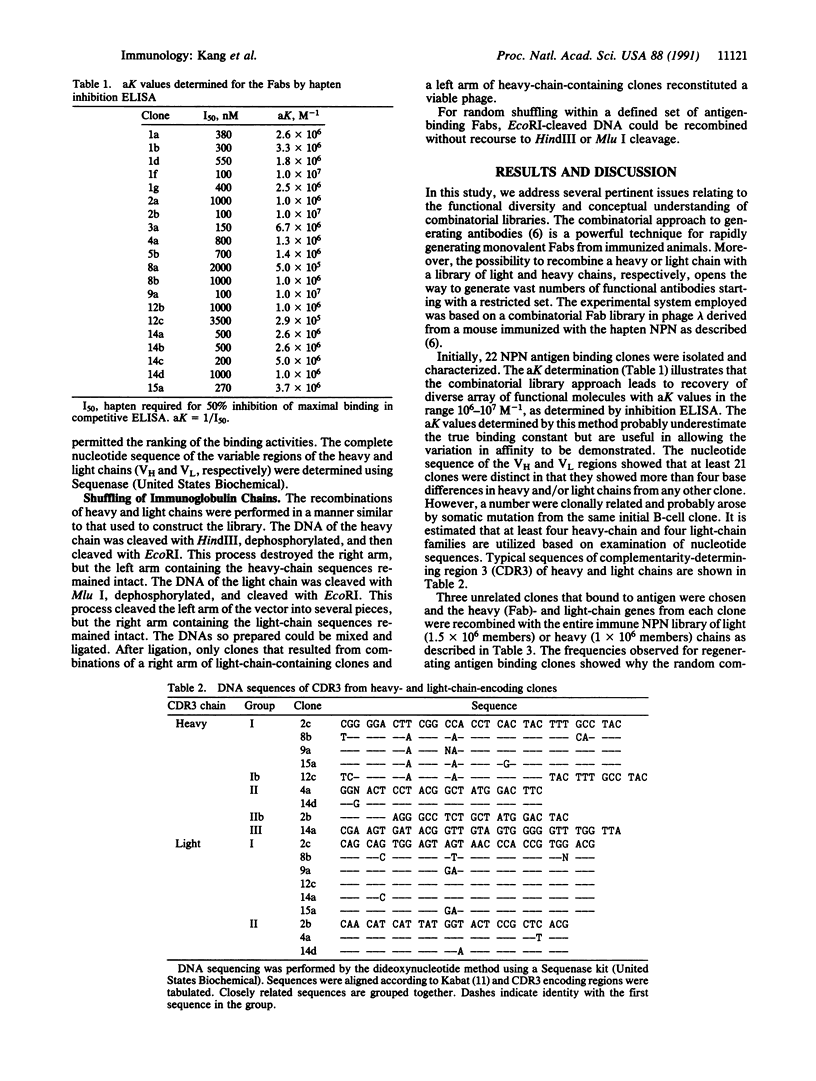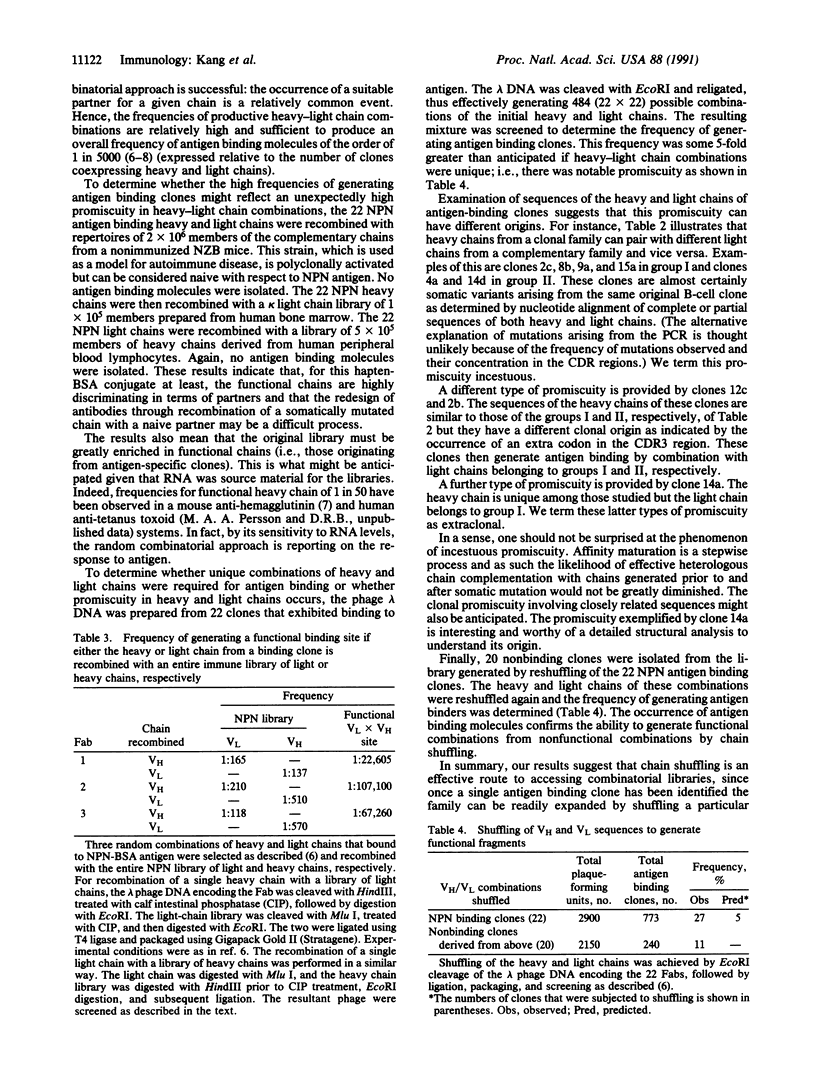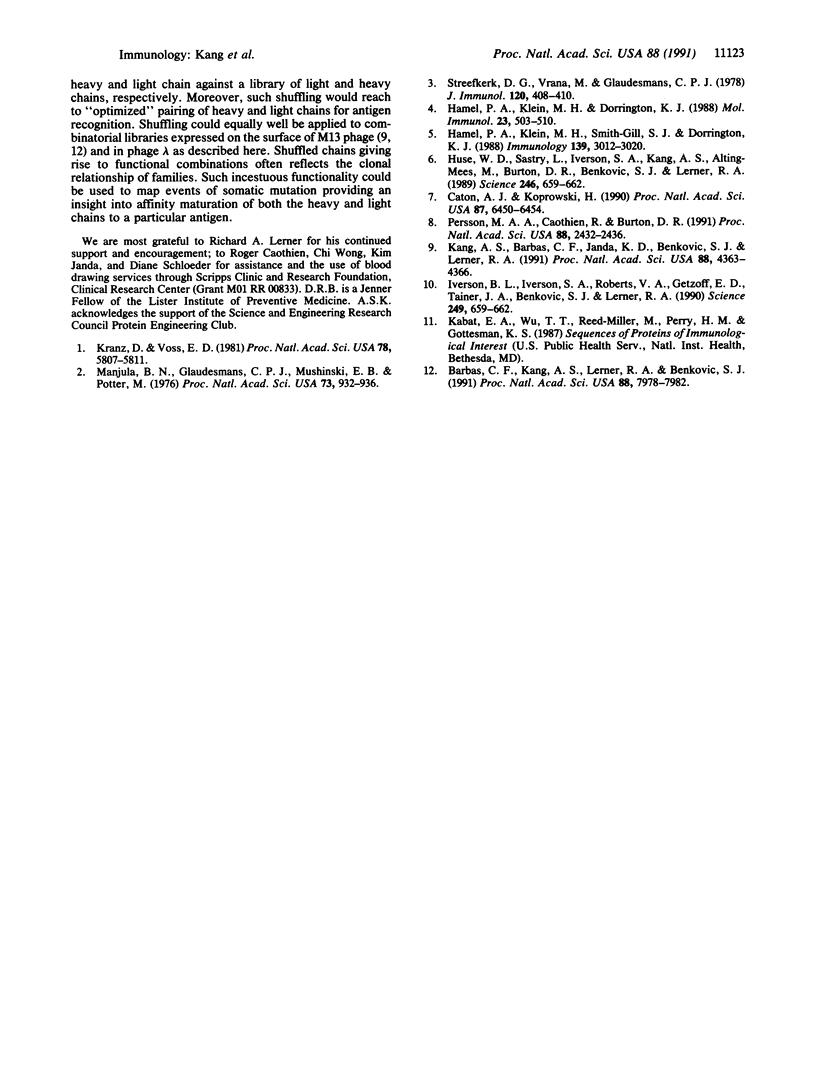Abstract
A number of experiments on the shuffling of heavy and light chains from antibodies of defined specificity for the transition-state analogue hapten nitrophenyl phosphonamidate are described. The experiments report on the promiscuity of heavy and light chains in binding antigen and the feasibility of antibody redesign by this shuffling process. The concepts of incestuous and extraclonal promiscuous association are described. Shuffling opens the possibility of generating panels of antibodies with related specificity but of distinct idiotypic composition that may have significance in the use of human monoclonal antibodies in therapy.
Full text
PDF



Selected References
These references are in PubMed. This may not be the complete list of references from this article.
- Barbas C. F., 3rd, Kang A. S., Lerner R. A., Benkovic S. J. Assembly of combinatorial antibody libraries on phage surfaces: the gene III site. Proc Natl Acad Sci U S A. 1991 Sep 15;88(18):7978–7982. doi: 10.1073/pnas.88.18.7978. [DOI] [PMC free article] [PubMed] [Google Scholar]
- Caton A. J., Koprowski H. Influenza virus hemagglutinin-specific antibodies isolated from a combinatorial expression library are closely related to the immune response of the donor. Proc Natl Acad Sci U S A. 1990 Aug;87(16):6450–6454. doi: 10.1073/pnas.87.16.6450. [DOI] [PMC free article] [PubMed] [Google Scholar]
- Hamel P. A., Klein M. H., Dorrington K. J. The role of the VL- and VH-segments in the preferential reassociation of immunoglobulin subunits. Mol Immunol. 1986 May;23(5):503–510. doi: 10.1016/0161-5890(86)90113-6. [DOI] [PubMed] [Google Scholar]
- Hamel P. A., Klein M. H., Smith-Gill S. J., Dorrington K. J. Relative noncovalent association constant between immunoglobulin H and L chains is unrelated to their expression or antigen-binding activity. J Immunol. 1987 Nov 1;139(9):3012–3020. [PubMed] [Google Scholar]
- Iverson B. L., Iverson S. A., Roberts V. A., Getzoff E. D., Tainer J. A., Benkovic S. J., Lerner R. A. Metalloantibodies. Science. 1990 Aug 10;249(4969):659–662. doi: 10.1126/science.2116666. [DOI] [PubMed] [Google Scholar]
- Kang A. S., Barbas C. F., Janda K. D., Benkovic S. J., Lerner R. A. Linkage of recognition and replication functions by assembling combinatorial antibody Fab libraries along phage surfaces. Proc Natl Acad Sci U S A. 1991 May 15;88(10):4363–4366. doi: 10.1073/pnas.88.10.4363. [DOI] [PMC free article] [PubMed] [Google Scholar]
- Kranz D. M., Voss E. W., Jr Restricted reassociation of heavy and light chains from hapten-specific monoclonal antibodies. Proc Natl Acad Sci U S A. 1981 Sep;78(9):5807–5811. doi: 10.1073/pnas.78.9.5807. [DOI] [PMC free article] [PubMed] [Google Scholar]
- Manjula B. N., Glaudemans C. P., Mushinski E. B., Potter M. Subunit interactions in mouse myeloma proteins with anti-galactan activity. Proc Natl Acad Sci U S A. 1976 Mar;73(3):932–936. doi: 10.1073/pnas.73.3.932. [DOI] [PMC free article] [PubMed] [Google Scholar]
- Persson M. A., Caothien R. H., Burton D. R. Generation of diverse high-affinity human monoclonal antibodies by repertoire cloning. Proc Natl Acad Sci U S A. 1991 Mar 15;88(6):2432–2436. doi: 10.1073/pnas.88.6.2432. [DOI] [PMC free article] [PubMed] [Google Scholar]
- Streefkerk D. G., Vrana M., Glaudemans C. P. Binding studies on heavy-light chain recombinant hybrid immunoglobulins A derived from murine myeloma anti-fructofuranans. J Immunol. 1978 Feb;120(2):408–410. [PubMed] [Google Scholar]


